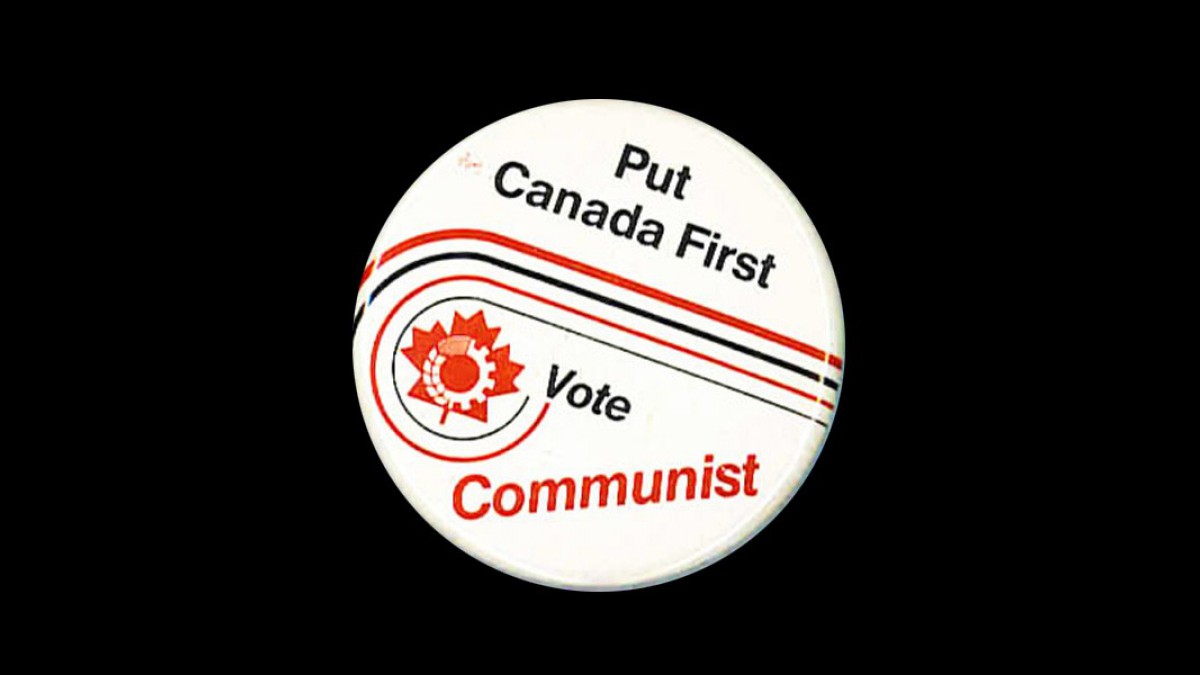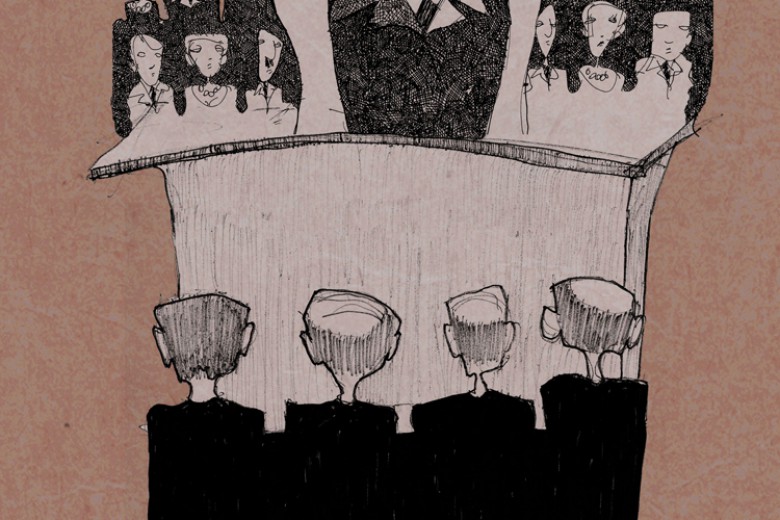Some people looking for a radical political group to join today come across the Communist Party of Canada (CPC). The CPC claims to be socialist and revolutionary, with a record of fighting for socialism since it was founded in 1921. But those claims are deceptive.
In 1921 most socialists in Canada who supported the Russian Revolution and revolutionary socialist politics united in the new CPC. This was the Canadian section of the Communist International (Comintern), the international organization of revolutionary socialist forces created in 1919 at the initiative of the Bolsheviks in Russia.
In the late 1920s the Stalinist loyalists drove other leaders and many members out of the CPC.
Later in the 1920s the CPC was taken over by members uncritically loyal to the new ruling layer in the USSR headed by Joseph Stalin. Stalin and co. imposed politics on the Comintern that were quite different from the politics of its first few years. In the late 1920s the Stalinist loyalists drove other leaders and many members out of the CPC.
After that the party was always a Stalinist organization in the tradition of socialism from above. Its vision of socialism was all about state control of the economy, not democratic control by the working class (the vision of Karl Marx, Rosa Luxemburg, and other socialists in the tradition of socialism from below). It attracted some people who rightly hated capitalism and wanted a left alternative to the Co-operative Commonwealth Federation (CCF) and, later, the NDP, but educated them in politics built on the disastrous notion that the USSR and similar societies were socialist.
The CPC loyally supported the rulers of the USSR through the many zigs and zags of their foreign policy, including the pact between the USSR and Nazi Germany of 1939-41. This meant that the CPC’s leaders supported the crushing of the Hungarian Revolution by the USSR’s military in 1956 and the invasion of Czechoslovakia in 1968, events that led many members to drop out of the CPC just as many Communist Party members did in other countries.
Over time the CPC came to admit that some mistakes had been made in the USSR, and to grudgingly criticize Stalin as an individual in some ways. But the CPC continued to stubbornly deny many truths about the USSR and other so-called “socialist” countries, and about many of the appalling things done by their rulers – from the dispossession of the peasantry leading to an enormous number of deaths in the USSR to smothering social revolution and murdering anti-Stalinist revolutionaries in Spain in the 1930s. Then as now, the distortions involved in defending Stalinism can be ridiculous: as a high school student in Ottawa in the late 1980s, I even heard a CPC member argue that the Berlin Wall had been built to stop West Berliners from going into East Germany to buy cheap consumer goods.
Members were trained to lump emancipatory left criticism of Stalinism in with right-wing anti-communism, a dishonest and misleading move that some on the left still make today.
Sadly, the CPC contributed to the discrediting of socialism by associating it with the kind of societies built in the USSR and later in China, Cuba, and elsewhere: class-divided societies based on the exploitation of workers and peasants by state rulers in single-party dictatorships. Members were trained to lump emancipatory left criticism of Stalinism in with right-wing anti-communism, a dishonest and misleading move that some on the left still make today.
That was one aspect of the CPC. Another was that many of its members were very active in workplace struggles, organizing the unemployed during the Great Depression alongside other campaigns, sometimes at great personal cost. There were sometimes serious flaws in the CPC’s approaches to these struggles, but the courage, commitment, and accomplishments of some CPC members are undeniable.
In the mid-1930s the rulers of the USSR changed their foreign policy, and the Comintern swung from its sectarian ultra-left policy of 1928-33, which labelled social democrats “social fascists,” to seeking “popular fronts” by uniting Communist Parties with social democrats and parties of liberal capitalists. From then on, the CPC’s politics were no longer revolutionary socialist but reformist, in spite of occasional revolutionary rhetoric.
Instead of a strategy aiming to replace the existing state with much more democratic political institutions created by workers themselves as part of a revolutionary transformation of society, the CPC adopted a two-stage strategy. In the first stage, it would aim to be part of a left government elected to office in the existing institutions of the capitalist state that would bring in various reforms. Eventually, at a later stage, the CPC would lead a gradual move towards socialism. It claimed there was a “progressive” section of the ruling class with which workers could cooperate (on occasion this led to backing Liberals in elections). Along with this came an embrace of Canadian nationalism.
From then on, the CPC’s politics were no longer revolutionary socialist but reformist, in spite of occasional revolutionary rhetoric.
The CPC’s reformist aversion to class struggle became visible when struggles heated up. Bryan Palmer describes this in Solidarity: The Rise and Fall of an Opposition in British Columbia, his book about the 1983 anti-austerity movement in the one province where the CPC still had real influence on the left at the time: “It would nudge the labour bureaucracy from time to time (although it would always clear this nudging with the top beforehand), but it would also play a role in keeping unruly leftists in line: defusing enthusiasm for a general strike; sabotaging plans for an occupation of government offices that emerged within WAB [Women Against the Budget]; and clamping down on action directed against the bureaucracy within the steering committee of the Lower Mainland Solidarity Coalition.”
Weakened by Cold War red-baiting and the conservative political climate of the 1950s as well as by the loss of many members after 1956, the CPC was still the dominant force to the left of the CCF/NDP until the end of the 1960s. After that more radical socialists, often anti-Stalinist, challenged its influence on the “left of the left.” The CPC became less active, aged and shrank.
When the USSR and most other “Communist” regimes collapsed in 1989-91, most members walked away from the CPC. Often they were lost to radical politics altogether, disillusioned about the fall of the societies they’d stubbornly championed for so long. Most accepted the idea that socialism had failed. Those who carried on in what was left of the CPC were orthodox Stalinists.
The CPC tends to go beyond opposing U.S. and Canadian imperialism – a basic responsibility of socialists – to giving political support to governments in conflict with Western imperialism that don’t deserve it.
Today the CPC criticizes capitalism while praising the rulers of China. It fails to see that China is now a rising imperialist power and somehow manages to believe that this dictatorship of a party that crushes attempts to organize independent unions, community organizations, and political groups but welcomes billionaire capitalists is socialist. The CPC tends to go beyond opposing U.S. and Canadian imperialism – a basic responsibility of socialists – to giving political support to governments in conflict with Western imperialism that don’t deserve it, such as Syria’s, and not opposing oppression in those countries.
Instead of prioritizing building powerful mass social movements, the CPC’s priority is building itself. That makes it a sectarian group. It has an exaggerated sense of its own importance, reflected in some of its actions and even its name (it’s far too small to be a party in the genuine socialist sense of the term, as opposed to the technical Elections Canada definition).
Because it sees the problem with unions today as mainly poor leadership and weak policies (an analysis that misses how unions today are bureaucratic at all levels and headed by an officialdom whose interests aren’t the same as those of workers) CPC members active in unions and other organizations tend to prioritize fostering relations with left-leaning officials over building grassroots power. This approach can even lead to seeing defeats that are partially the fault of such officials as victories, such as the Federated Co-Op refinery lockout of 2019-2020.
Joining the CPC without understanding that its “Marxism-Leninism” is Stalinist reformism is an understandable mistake; staying in the CPC is a mistake of a different kind.
Although it supports Indigenous people’s struggles it rejects the idea that Canadian society is settler-colonial (its leaders recently defeated an effort by some members to get the CPC to adopt such an understanding). It calls Canada imperialist but at the same time celebrates “the struggle for Canadian sovereignty and independence” against U.S. domination. This misunderstands the partnership between Canadian and U.S. imperialism and the thoroughly reactionary character of Canadian nationalism.
As capitalism takes us down the road towards climate catastrophe, we need revolutionary socialist political forces constructively active in building social movements. Today these forces are very weak, and people becoming radicals today know less about Stalinism than used to be the case. Joining the CPC without understanding that its “Marxism-Leninism” is Stalinist reformism is an understandable mistake; staying in the CPC is a mistake of a different kind. Of course it’s wrong to refuse to work with members of the CPC in today’s struggles because of political disagreements, but that’s no reason to not be clear about its history and politics. The next left needs liberatory ecosocialist theory and ways of organizing that are very different than those of the CPC.
For further reading:
- Charlie Post, “'Actually-Existing Socialism’: A Critique of Stalinism” is a very good short overview of the history and politics of Stalinism.
- Charlie Post, “The Capitalist State and Socialist Strategy” provides a theoretical perspective with which to assess the CPC’s strategy.
- Ian Angus, Canadian Bolsheviks is a detailed look at the CPC in the 1920s.
- Norman Penner, Canadian Communism: The Stalin Years and Beyond contains useful material, although its political interpretation is different than mine.







